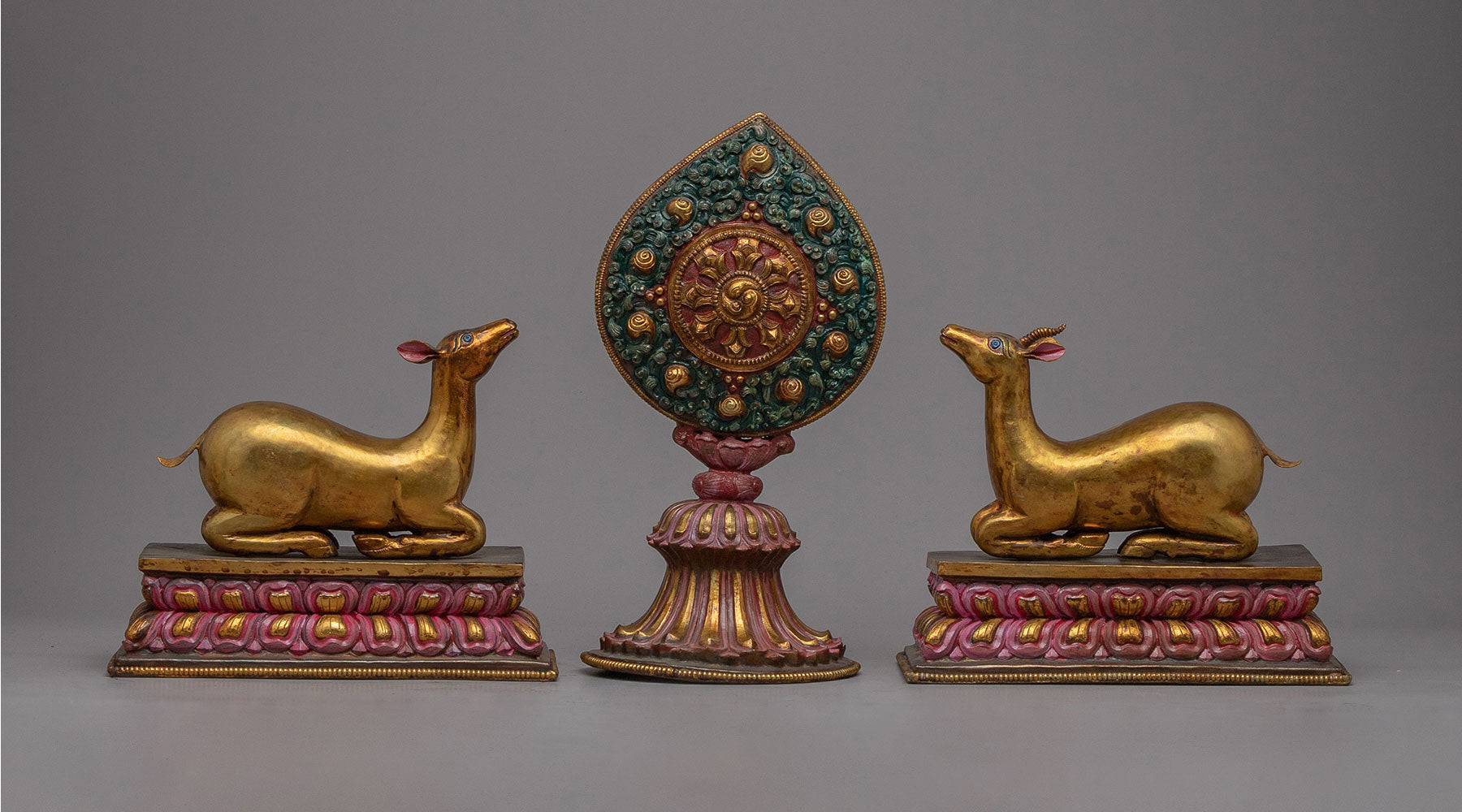Understanding the Dharmachakra: The Wheel of Dharma
The Dharmachakra, commonly referred to as the "Wheel of Dharma," serves as more than a mere Buddhist symbol; it embodies the profound teachings and philosophy of the Buddha. This in-depth piece delves into its historical roots, symbolic significance, cultural influence, and contemporary interpretations, providing a comprehensive understanding of the Dharmachakra.
Key Takeaways:
- The Dharmachakra symbolizes the Buddha's teachings and the path to enlightenment.
- It has eight spokes, each representing a part of the Noble Eightfold Path.
- The Dharmachakra's influence extends beyond Buddhism, symbolizing peace and unity in various cultures.
Historical Origins: Early Representations
The roots of the Dharmachakra extend to ancient Indian traditions, where wheels were symbolic of motion and change. The Buddha adopted this motif to signify his teachings, the Dharma, initiating the metaphorical "wheel" of law and order.
- First Appearance: The Dharmachakra is first documented in ancient Buddhist texts, notably in the Pali Canon.
- Initial Usage: Initially employed as a symbolic representation, the Dharmachakra evolved into a prominent visual symbol in Buddhist art and architecture.
Influence on Buddhist Art

Click here to view our Dharmacharka
The representation of the Dharmachakra in Buddhist art has evolved over centuries, exhibiting diverse variations in regions such as India, Tibet, and East Asia. Each culture infused distinctive artistic elements while preserving the symbol's core meaning.
- Artistic Variations: The symbol's depiction varies from simple wheels to elaborate, ornate designs.
- Integration in Buddhist Art: The Dharmachakra appears in temple murals, manuscripts, sculptures, and even in the architecture of stupas and monasteries.
Symbolism of the Wheel Of Dharma
Eight Spokes Significance: The Dharmachakra's distinctive eight spokes symbolize an aspect of the Noble Eightfold Path—Right View, Right Intention, Right Speech, Right Action, Right Livelihood, Right Effort, Right Mindfulness, and Right Concentration.
Circular Symbolism: The wheel's circular form represents the perfection of the Buddha's teachings, embodying a timeless cycle without a beginning or end. This signifies the perpetual cycle of birth, life, and death (samsara) and the potential for liberation (nirvana).
Hub and Rim Metaphor: The hub signifies moral discipline, essential for maintaining spiritual practice, while the rim represents concentration and mindfulness, serving as the cohesive elements that bind the course together.
The Wheel of Dharma in Practice
Rituals and Ceremonies
Symbol in Rituals: In Buddhist rituals, the Dharmachakra frequently symbolizes the Buddha's inaugural teaching at Sarnath, where he initiated the 'Wheel of Dharma.' This pivotal moment is commemorated in ceremonies, particularly during Dharmachakra Day or Dharma Day.
Meditative Contemplation: Buddhists engage in meditation on the Dharmachakra as a means of internalizing the Buddha's teachings. This reflective practice often entails visualizing the wheel and reflecting on its profound symbolism.
Cultural and Global Impact
Adoption in Various Cultures
Global Spread: Originating in India, the symbol of the Dharmachakra was disseminated to various Asian countries, such as Tibet, China, and Japan. In each region, the logo underwent adaptation to local cultures, often acquiring new meanings and interpretations.
Contemporary Significance: The Dharmachakra is globally acknowledged as a symbol of Buddhism. It embodies the Buddha's teachings and serves as a universal symbol representing spiritual growth, peace, and the pursuit of truth.
The Dharmachakra in Art and Architecture
Depiction in Sculptures and Paintings
The Dharmachakra appears extensively in Buddhist art, from ancient rock carvings to modern paintings. Each representation reflects the cultural and religious context of its time.
- Artistic Styles: The symbol's depiction ranges from simple, stylized forms to intricate, detailed designs.
- Iconographic Interpretations: Artists have imbued the Dharmachakra with various symbolic meanings, often related to the teachings of the Buddha.
Architectural Significance
In Buddhist architecture, the Dharmachakra is a prevalent motif, often seen atop temple gates, on the crown of Buddha statues, and in the design of stupas. Its presence in architecture symbolizes the spread of Buddha's teachings.
- Symbolic Placement: The placement of the Dharmachakra in temples often signifies the teaching and learning of Dharma.
- Architectural Adaptations: The symbol has been adapted into various architectural elements, reflecting the integration of Dharma in all aspects of life.
The Enduring Legacy of the Dharmachakra, an ancient symbol rooted in the teachings of the Buddha, continues to inspire and guide millions of people worldwide. Its representation of the Noble Eightfold Path offers a blueprint for ethical living and spiritual awakening, transcending its origins to symbolize universal truths and the interconnectedness of all life.














